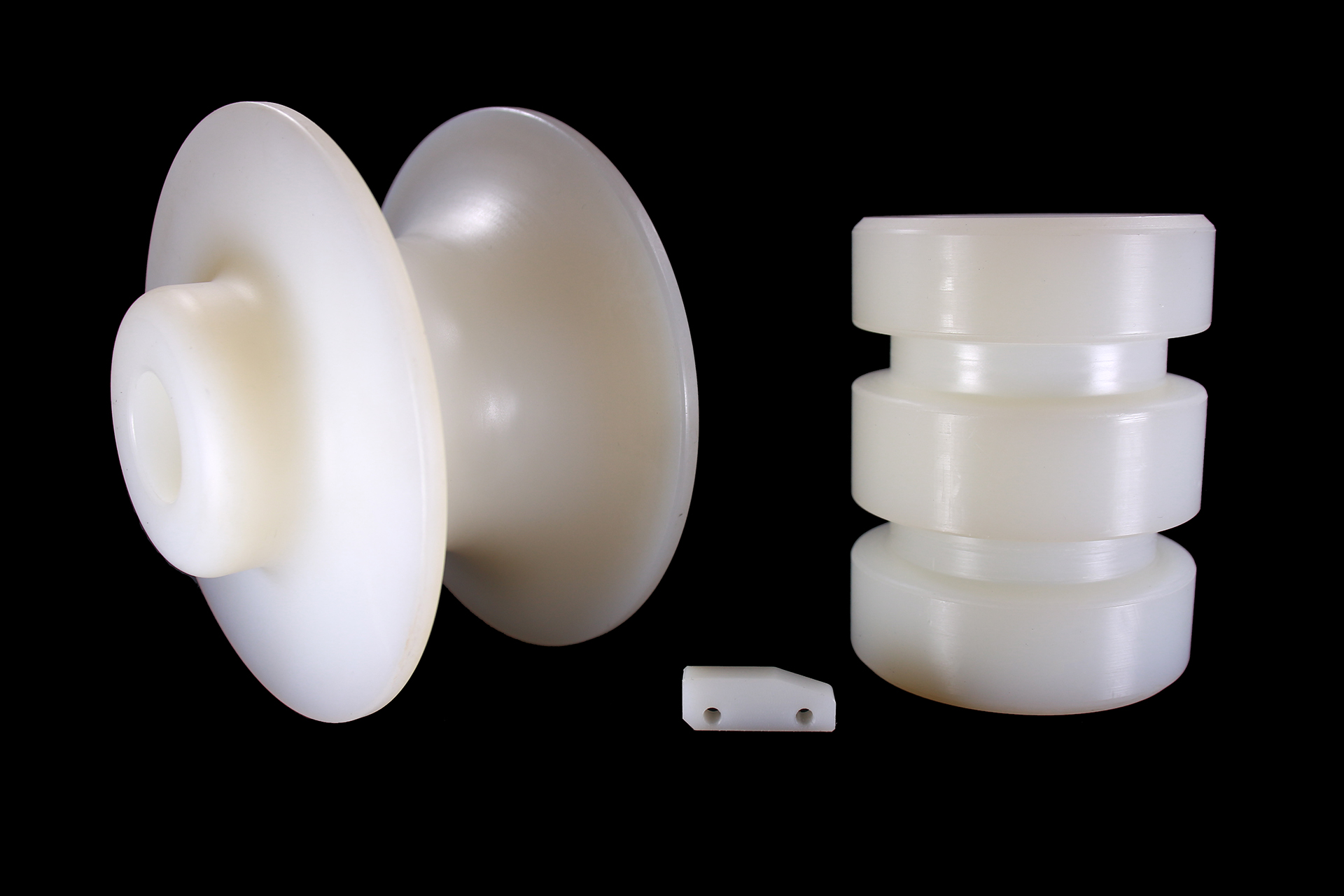
Polymat PA 6
Polyamide 6 (PA 6) is a versatile and widely used thermoplastic polymer renowned for its strength, durability, and ease of processing. It is commonly referred to as Nylon 6 and is utilized across a broad range of applications due to its balanced properties.
Mechanical Properties
- High Tensile Strength : Up to 90 MPa, offering robust performance under stress and high load-bearing capability.
- Excellent Impact Resistance: Capable of withstanding significant impact forces without major deformation or failure, making it ideal for demanding applications.
- Good Fatigue Resistance: Performs well over repeated stress cycles, which helps in maintaining durability and reducing the likelihood of material failure.
- Low Coefficient of Friction: Provides a low coefficient of friction, reducing wear and tear in moving components such as gears and bearings.
- High Modulus of Elasticity: Offers rigidity and stability under load, ensuring reliable performance in high-stress applications.
- Moderate Creep Resistance: Shows reasonable resistance to deformation under constant load over time.
Thermal Properties
- Continuous Service Temperature: Typically effective up to around 85°C (185°F), with some grades offering higher thermal stability.
- Thermal Stability: Maintains performance in moderate thermal environments; however, high temperatures may affect its properties.
- Thermal Expansion: Exhibits moderate thermal expansion, which should be considered in precision applications.
- Glass Transition Temperature: Around 45°C (113°F), above which the material becomes more flexible and less rigid.
- Thermal Insulation Properties: Provides effective insulation against heat to manage thermal conditions.
- Thermal Oxidative Stability: Generally stable in moderate temperature oxidative environments, though high temperatures may impact performance.
Chemical Properties
- Chemical Resistance: Shows good resistance to many chemicals, including acids and bases, though resistance to strong acids and bases is limited.
- Resilience to Corrosive Environments: Performs adequately in environments with moderate corrosive chemicals.
- Resistance to Hydrolysis: Sensitive to moisture; prolonged exposure can lead to hydrolytic degradation, impacting mechanical properties.
- Non-reactivity: Generally stable with most chemicals but may absorb moisture, affecting dimensional stability.
- Durability in High-Temperature Chemical Environments: Not as resilient as some advanced polymers in extreme conditions, but suitable for many standard environments.
- Moderate Permeability: Has moderate permeability to gases and liquids, which should be considered for containment applications.
Application Sectors
Automotive
Utilized in engine parts, transmission components, and fuel system parts due to its high strength, durability, and resistance to automotive fluids.
Electronics and Electrical
Employed in insulators, connectors, and housings due to its good electrical insulating properties and dimensional stability.
Medical
Used in various medical devices, including surgical instruments and prosthetic components, due to its biocompatibility and ability to withstand sterilization processes.
Industrial Manufacturing
Applied in bearings, gears, and conveyor belts, leveraging its wear resistance, low friction, and high mechanical strength.
Textile and Apparel
Utilized in high-performance fabrics and textiles, such as in outdoor and sportswear, due to its durability, strength, and resistance to abrasion.
Packaging
Used in packaging materials and containers, where its strength and chemical resistance are advantageous.
Consumer Goods
Found in a variety of consumer products, including durable goods and household items, due to its versatility and robustness.
Aerospace
Employed in non-structural components and insulations, benefiting from its strength and moderate thermal properties.
Oil and Gas
Used in seals, gaskets, and other components where moderate chemical resistance and durability are required.
Energy
Applied in components for energy systems, including renewable energy technologies, due to its mechanical strength and stability.
Defense and Military
Utilized in various defense applications where high strength and impact resistance are crucial.
Semiconductors
Employed in semiconductor manufacturing equipment where moderate thermal and chemical stability is necessary.